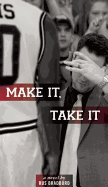
| Publisher: | Cinco Puntos Press | |
| Genre: | General, Sports & Recreation, Basketball | |
| ISBN: | 9781935955436 | |
| Pub Date: | January 2013 | |
| Price: | $14.95 |
| Starred | Fiction |
by Rus Bradburd
College basketball may well be irretrievably corrupted by money, racial tension and academic fraud, but it's still a pretty, pretty thing to see a talented young player driving in for a lay-up. That contradiction between cynicism and a fan's appreciation provides the theme for Make It, Take It, a debut novel about the complex interactions between coaches and players at a fictional college in the southwest. Ex-coach Rus Bradburd crafts a spare and intriguing story that illuminates the complex machinations required to stay afloat in the unforgiving world of this high-stakes "amateur" sport. Ironic, acerbic and often distressing, Make It, Take It is fiction, but it feels more authentic than any ESPN documentary.
Assistant coach Steve Pytel is awash in desperation but unable to leave the game he loves: His marriage is in trouble, his new head coach is an egotistical ass and wrangling his players requires inordinate amounts of patience and a flexible sense of ethics. Clearly drawing on his own experience, Bradburd is unafraid to describe uncomfortable issues of race and class, as well as controversial subjects like predatory recruitment and coach-player tensions. With an ear for the music of leather on hardwood, Bradburd is a fan, no question--but Make It, Take It is both a crisply sardonic tale of frustration and a blistering indictment of the sickness inherent in the business of college basketball. --Cherie Ann Parker, freelance journalist and book critic
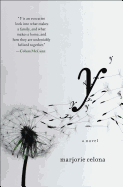
| Publisher: | Free Press | |
| Genre: | Fiction, Family Life, Literary | |
| ISBN: | 9781451674385 | |
| Pub Date: | January 2013 | |
| Price: | $24.99 |
| Fiction |
by Marjorie Celona
The opening of Marjorie Celona's debut novel Y contains enough similarities to Dorothy Allison's Bastard Out of Carolina that it begs the question: homage or imitation? Both novels commence with a hapless daughter describing the circumstances of her entry into the world with adult omniscience. Both daughters are born prematurely and illegitimately to impoverished teenagers; both suffer childhoods damaged by instability and abuse. Fortunately, Celona's novel diverges from Allison's after its parallel parturition--where Bastard Out of Carolina exposes the fallacy of equating maternal love with safety, Y exposes the anomie that occurs when well-intentioned maternal abandonment is followed by inadequate and abusive foster care. The core of Y is not the insecurity of home, but a foundling's quest for home."
Celona's single-letter title refers to the site of baby Shannon's abandonment: the doorstep of a YMCA on Vancouver Island. The author also riffs on Y as a signifier, plotifying its shape ("The wishbone, fork in the road") and spelling out its existential homonym ("Why?). Shannon attempts to reconcile her Y/why dilemma by telling two stories: her mother's and her own. Celona pulls off this sleight-of-narrative in blunt, tamped-down prose that is worthy of comparison to its literary precedent. The scenes are swift and clear, the transitions are well-cued and the reader's sympathies adhere easily to Shannon's lonely, stubborn efforts to squirm into a safe place in the world. --Holloway McCandless, blogger at Litagogo.com.
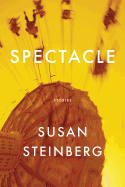
| Publisher: | Graywolf Press | |
| Genre: | Fiction, Short Stories (single author), Literary | |
| ISBN: | 9781555976316 | |
| Pub Date: | January 2013 | |
| Price: | $14 |
| Fiction |
by Susan Steinberg
The interconnected short stories of Susan Steinberg's Spectacle push the limits of traditional literary forms while exploring the idea that our major social roles are performances distinct yet not separate from the individuals performing them. Loss and grief are key themes here, as the protagonists of these stories scramble to make sense of events. A daughter is forced to make the call to "pull the plug" on her vegetative father. Pining for a guy, a girl steals his car stereo, realizing only later that the goods are not the boy. The voices of each of Steinberg's protagonists intertwine, creating a collection that manages to become greater than the sum of its parts.
Form and content are interconnected in these stories, as they bend traditional prose and poetic forms while maintaining a piercing clarity of sense. Many of Steinberg's pieces "perform" elements of both poetry and prose without definitively becoming either--much as the protagonists "perform" elements of both guy and girl without ever fully identifying with the performance. Both the characters and the narratives store meaning in the spaces between the conventions, where the silence of a line break or an unspoken thought speaks volumes. At once vibrant and violent, Spectacle takes on unexpected territory and reveals it is all too familiar. --Dani Alexis Ryskamp, blogger at The Book Cricket
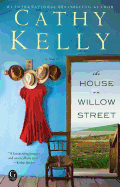
| Publisher: | Gallery | |
| Genre: | Fiction, Romance, Contemporary Women, Contemporary | |
| ISBN: | 9781451681406 | |
| Pub Date: | January 2013 | |
| Price: | $16 |
| Fiction |
by Cathy Kelly
As postmistress of the tiny Irish town of Avalon, Danae Rahill knows a lot of secrets. She has managed to keep the secret of her own past for 18 years, but when her niece Mara comes to stay (and heal from a broken heart), she asks more questions than Danae is prepared to answer.
Tess Power grew up in genteel poverty with her sister, Suki, in a big house overlooking the town, but was forced to sell it after her father's death. Now, as Tess's marriage and her antique shop both face difficulties, the house has come back up for sale. When Suki returns to Avalon, as does Tess's first love, Cashel Reilly, now a wealthy businessman, Tess must revisit painful memories from her past even as she struggles to care for her children and help Suki navigate her own personal crisis.
Kelly creates a charming small-town setting, complete with a cozy café, nosy but well-meaning shopkeepers and neighbors, and not one but two faithful dogs. While the central love story unfolds predictably, other surprises in the narrative (including a cheery motorcycle mechanic and a Christmas dinner party composed of unlikely guests) will hold readers' interest. The slowly unraveling secret of Danae's past lends gravity to an otherwise light plot, providing more reasons to admire her quiet strength.
A tribute to family, friendship and the hope of new beginnings, The House at Willow Street is a heartwarming read perfect for a quiet winter weekend. --Katie Noah Gibson, blogger at Cakes, Tea and Dreams
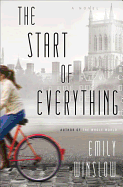
| Publisher: | Delacorte | |
| Genre: | Suspense, Psychological, Fiction, Police Procedural, Mystery & Detective, Thrillers | |
| ISBN: | 9780385342902 | |
| Pub Date: | January 2013 | |
| Price: | $26 |
| Mystery & Thriller |
by Emily Winslow
When an unidentified body is found floating in the fens outside of Cambridge, Detective Inspector Chloe Frohmann and her partner, Morris Keene, set out to figure out who she was--and how she died--while struggling to come to terms with a near-fatal injury Keene suffered on the job months prior. Meanwhile, Mathilde Oliver, daughter of a Cambridge professor, opens a letter addressed to a woman who may or may not exist and quickly becomes obsessed with finding her. And months ago, two nannies found themselves snowed in with their employers during a particularly bad winter storm--with far-reaching consequences.
These seemingly unrelated stories form the foundation of Emily Winslow's second novel, The Start of Everything, which reintroduces key characters from Winslow's debut, The Whole World (though an understanding of the first is not required to appreciate and enjoy the second). The constantly shifting perspective and perpetually unreliable narrators used to introduce the case can make the novel feel scattered at first, but a little trust goes a long way in allowing Winslow's complex mystery to bring itself together. When it does, the result is a gripping whodunit steeped in lies and deceit and shifting truths that reinforces Winslow's place as a master of psychological mystery. The Start of Everything is a testament to the imagination of its author, dazzling in its ingenuity and gripping in its suspense. --Kerry McHugh, blogger at Entomology of a Bookworm

| Publisher: | Minotaur | |
| Genre: | Fiction, Mystery & Detective, Historical | |
| ISBN: | 9781250010766 | |
| Pub Date: | January 2013 | |
| Price: | $24.99 |
| Mystery & Thriller |
by Sam Thomas
York, England, in 1644, is a dangerous place. Parliament's armies have laid siege to the city, while the King's adherents are fighting back. In addition to the war, everyday life is difficult enough--as midwife Bridget Hodgson knows all too well. She struggles to deliver babies and save mothers' lives, but she isn't always successful.
Then Esther Cooper is arrested for the murder of her husband. The Lord Mayor asks Bridget to examine Esther's body; he thinks she's guilty and wants to burn her at the stake, but he can't, because she is claiming to be pregnant. Bridget has two days to prove her friend's innocence. She and her servant Martha (who is suspiciously good with knives and lock picks), set out to try and find out who else could have wanted Stephen Cooper dead--a list, they discover, that includes leading citizens across York's political spectrum.
While investigating on Esther's behalf, Bridget and Martha also keep busy delivering babies, examining women who are accused of being pregnant out of wedlock and avoiding a violent man from Martha's past.
Sam Thomas's debut offers an amazing amount of information about 17th-century midwifery and daily life in a Puritanical society. But the details never bog down the absorbing mystery, and Bridget's determined character shines through. The Midwife's Tale is a fascinating book that historians and mystery readers will both love. --Jessica Howard, blogger at Quirky Bookworm
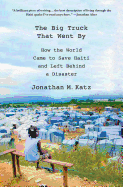
| Publisher: | Palgrave Macmillan | |
| Genre: | Political Science, Caribbean & Latin American, General, Disasters & Disaster Relief, History, Social Science, Developing & Emerging Countries, World, Caribbean & West Indies | |
| ISBN: | 9780230341876 | |
| Pub Date: | January 2013 | |
| Price: | $26 |
| Current Events & Issues |
by Jonathan M. Katz
When a huge earthquake ripped the heart out of Haiti's capital, Port-au-Prince, in January 2010, Associated Press correspondent Jonathan Katz was the only American journalist at the epicenter, watching as the city disintegrated around him. The Big Truck That Went By is a personal account of his own disorientation and panic as he tried first to save himself, then find and help friends and neighbors and, finally, report the stories of its aftermath to the world. Katz knew the people on the street, in the government and running the NGOs well enough to dig into the reality behind the chaotic destruction of the poorest country in the Western hemisphere. He tells the unvarnished story of the roughshod tarp cities, the sick and injured and the broken infrastructure of a city on its knees.
More than just the story of the earthquake's impact on Haiti, however, he also tells of the largely ineffectual and disorganized global relief effort. Hillary Clinton's affirmation to the Haitian people that "you will not be forsaken; you will not be forgotten" disappeared into the black hole of broken commitments. The $16 billion of promised aid ("the big truck") was only partially delivered; much of that went into the pockets of NGO headquarters outside Haiti. Six months after the quake, Katz reports, "just $210 million had been given to the Haitian government, all with restrictive strings attached." Katz's account of the Port-au-Prince tragedy suggests that the world has long way to go before it can effectively translate good intentions into real help for those in need. --Bruce Jacobs, founding partner, Watermark Books & Cafe, Wichita, Kan.
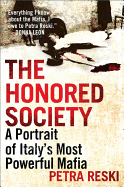
| Publisher: | Nation Books | |
| Genre: | True Crime, History, Social Science, Violence in Society, Europe, Organized Crime, Italy | |
| ISBN: | 9781568589732 | |
| Pub Date: | January 2013 | |
| Price: | $16.99 |
| Current Events & Issues |
by Petra Reski
Petra Reski had covered the Mafia as an investigative journalist in Germany for years, to the minimal interest of her editors and readers, who considered it an Italian problem. Then, in 2007, six Calabrians were executed in the town of Duisburg, and suddenly the German public was interested in the Mafia.
In The Honored Society, Reski composes character studies of various players both within the Mafia and fighting against it, based on her reminiscences of meetings and interviews. In addition to mafiosi and police investigators, her subjects include public prosecutors, defense lawyers, priests, fellow journalists and Mafia wives and daughters. Accompanied by her cabbie, Salvo, and her photographer, Shobha (as well as Shobha's mother, a famous anti-Mafia photographer in her own right), Reski travels the streets of Italy and recalls the personalities she's known. Her sketches of these "bad guys" and their adversaries are intimate and contemplative, rooted in years of experience. Even while excoriating the actions and influence of the Mafia, she seems to feel respect, even affection, toward certain individuals, revealing a conflicted relationship much like the one she describes between the Italian public and its famous criminal organization.
Generally, Shaun Whiteside's translation of Reski's work (from the German original of 2008) reads as straightforward, simple prose; but a quiet poetry lurks in certain turns of phrase and carefully crafted images. The Honored Society is an unusually structured view into the strange and powerful world of the Italian Mafia. --Julia Jenkins, librarian and blogger at pagesofjulia
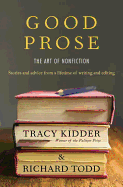
| Publisher: | Random House | |
| Genre: | Authorship, Language Arts & Disciplines, Biography & Autobiography, Writing Skills, Reference, Literary | |
| ISBN: | 9781400069750 | |
| Pub Date: | January 2013 | |
| Price: | $26 |
| Starred | Reference & Writing |
by Tracy Kidder, Richard Todd
Tracy Kidder (The Soul of a New Machine) and his longtime editor, Richard Todd, are rock stars of narrative nonfiction. When they talk about their art and craft, you'd be wise to listen. In Good Prose they share both practical editing advice and general narrative recommendations relating to things like structure, point of view, style and voice. Rather than just collaborating on a single seamless text, however, each intersperses his own thoughts amid the guidelines and examples. The resulting easygoing ramble on good writing is as entertaining as it is useful.
It is hard to avoid aphorisms in this sort of book, and Kidder and Todd are not afraid to include several. For example, in discussing where to start a work, they caution that "the heart of the story is a place to arrive at, not a place to begin." In a discussion of authorial voice, they advise "if you can't imagine saying something aloud, then you probably shouldn't write it." Fortunately, they break the schoolhouse rules with pertinent quotations from many nonfiction writers (from Montaigne to David Foster Wallace) and personal commentaries on Kidder's own books.
When thousands of books, tweets, 'zines and blogs confront readers every day, perhaps the best advice Kidder and Todd have for writers is to first ask themselves: "Who am I to be writing this? Who asked me? Who cares?" Honest answers here might mercifully cut down the clutter. --Bruce Jacobs, founding partner, Watermark Books & Cafe, Wichita, Kan.

| Publisher: | Knopf | |
| Genre: | General, Biography & Autobiography, Psychology, American, Women, Poetry | |
| ISBN: | 9780307959553 | |
| Pub Date: | January 2013 | |
| Price: | $26.95 |
| Poetry |
by Sarah Arvio
Sarah Arvio's third poetry collection, Night Thoughts, is a memoir in three parts, an unusual way for an always original and surprising writer to confront her past. She calls it an "exploration of the dreaming mind," set out in 70 irregular sonnets, "dream poems" that describe "the evolution of a psychoanalysis and the events that gave rise to that treatment."
When Arvio was 12, she had disturbing dreams and visions based on personal experiences. The poems read like a patient talking in a rambling, associative way to her doctor about her dreams:
the taxi leaves me standing in the street
& the streetlamp goes out there is this sort
of dream that leaves me without a heart or
more like a hole in my selfheart
heartself that hellhole of a dream
The poems are mesmerizing, brutal, sexual, allusive, filled with colors and wild images. These are followed by the book's second part, a set of notes to the poems, meant to be read as a narrative; parts of the poems are explicated by Arvio while her story is recreated out of her experiences and dreams--Arvio as analyst tries to come to grips with her "self." Lastly, an extensive index allows us to "relocate" some of the images, colors, and dream-related thoughts that appear throughout the book. Night Thoughts is challenging and utterly fascinating. --Tom Lavoie, former publisher
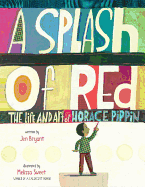
| Publisher: | Knopf | |
| Genre: | People & Places, United States, Juvenile Nonfiction, Art, Biography & Autobiography | |
| ISBN: | 9780375867125 | |
| Pub Date: | January 2013 | |
| Price: | $17.99 |
| Starred | Children's & Young Adult |
by Jen Bryant, illust. by Melissa Sweet
The team behind the Caldecott Honor book A River of Words: The Story of William Carlos Williams once again creates a lyrical ode to an extraordinary man.
Carefully chosen details repeat in spoken and visual refrains that give shape to the life of Horace Pippin (1888-1946) and his dedication to recording his experiences through his artwork. Horace has "big hands" like his grandmother's, for instance, and he puts them to work doing chores, caring for his siblings and creating his artwork. Yet "the biggest part of you is inside, where no one can see," Grandma Pippin tells Horace.
Another refrain, "Make a picture for us, Horace!," highlights the support Horace received from family, schoolmates and, later, fellow workers and soldiers he fought alongside in World War I. Melissa Sweet's collage artwork depicts the many drawings that fill Horace's living room and his thoughts ("Pictures just come to my mind... and I tell my heart to go ahead," reads one of many quotations threaded into Jen Bryant's narrative). Red barbed wire in his drawings of the war front connects to a nighttime image of Horace getting shot in his drawing arm: "Now, when someone said, 'Make a picture for us, Horace!'... Horace could not." Author and artist demonstrate how deeply the war affected Horace, but also how his passion pushed him to find a way to paint again, to widespread acclaim.
Children will enjoy finding the "splash of red" on every page, and come to appreciate Horace Pippin's lifelong passion for drawing and painting. --Jennifer M. Brown, children's editor, Shelf Awareness
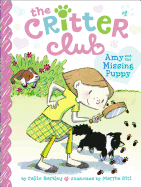
| Publisher: | Little Simon | |
| Genre: | Animals, Pets, Chapter Books, Readers, Mysteries, Espionage, & Detective Stories, Juvenile Fiction | |
| ISBN: | 9781442457706; $4.99 paperback 9781442457690 | |
| Pub Date: | January 2013 | |
| Price: | $15.99 |
| Children's & Young Adult |
by Callie Barkley, illust. by Marsha Riti
This kickoff to a charming new early chapter book series describes Amy's puppy rescue efforts leading to the formation of the Critter Club.
Young readers meet Amy and her best friends, Ellie, Liz and Marion at their weekly Friday sleepover. It's their last one before spring break, and it seems that everyone has fun plans except Amy, who's stuck at home. Well, not really stuck. Amy loves helping out at her veterinarian mother's clinic, and she loves to read--Nancy Drew especially. So when mean Ms. Sullivan's new Saint Bernard puppy, Rufus, digs under the fence and escapes, Amy is on the case, following Nancy Drew's example. Amy tracks down paw prints and makes a list of possible destinations for Rufus and, along the way, changes her view of Ms. Sullivan. Amy calls Ellie, and Liz returns early from vacation, so they help, too, following up on clues and making posters.
The format is ideal for children just graduating from beginning readers, with large type, generous white space and short chapters. Plentiful illustrations convey clear clues, emphasize the teamwork among the four friends, and invite readers to solve the mystery along with Amy. A gentle lesson about Ms. Sullivan also cautions against "judging a book by its cover." In their second adventure, All About Ellie (also published this month), Ellie auditions for the school play--but will that take precedence over the Critter Club? Fans will be eager to find out. --Jennifer M. Brown, children's editor, Shelf Awareness